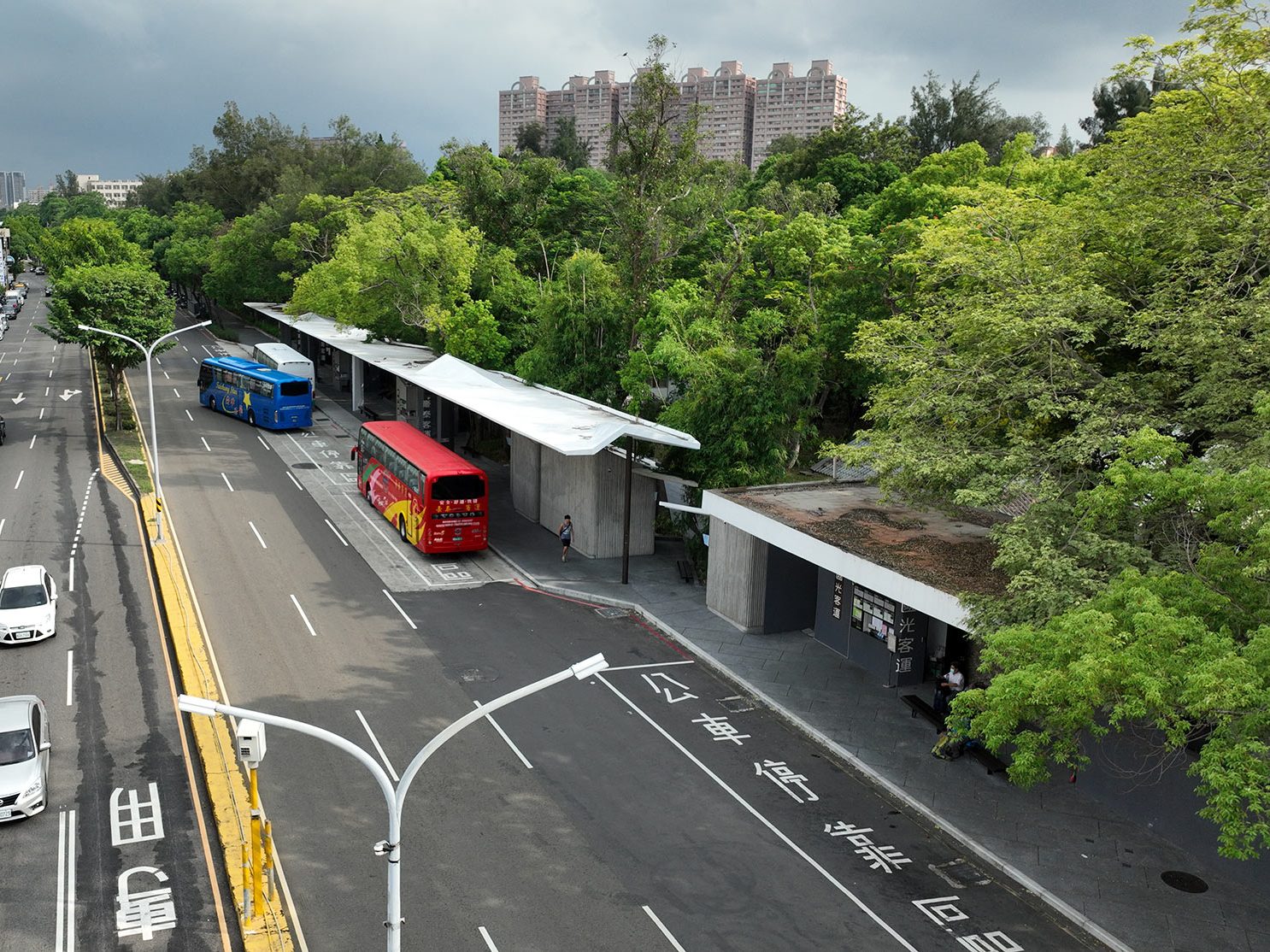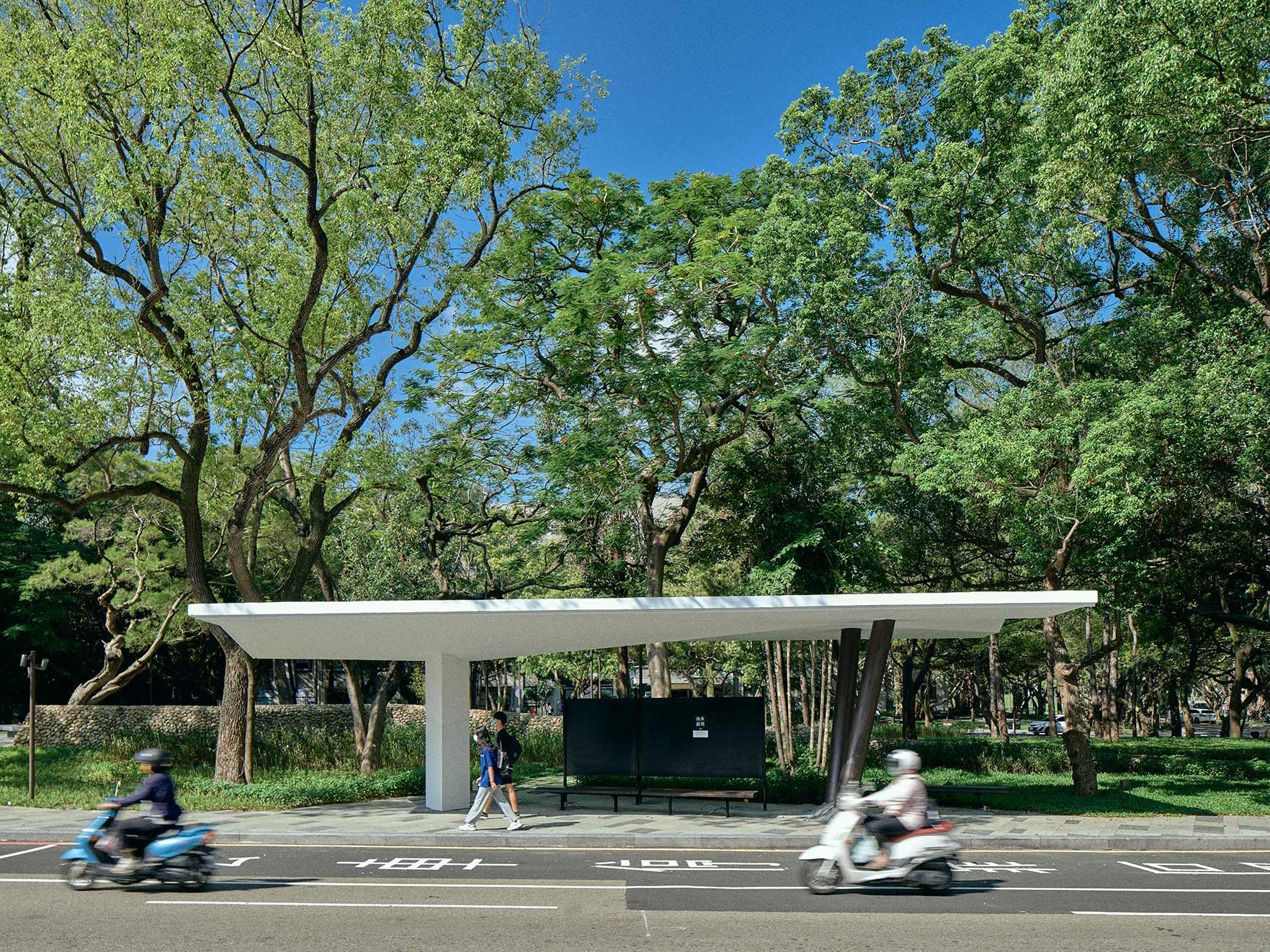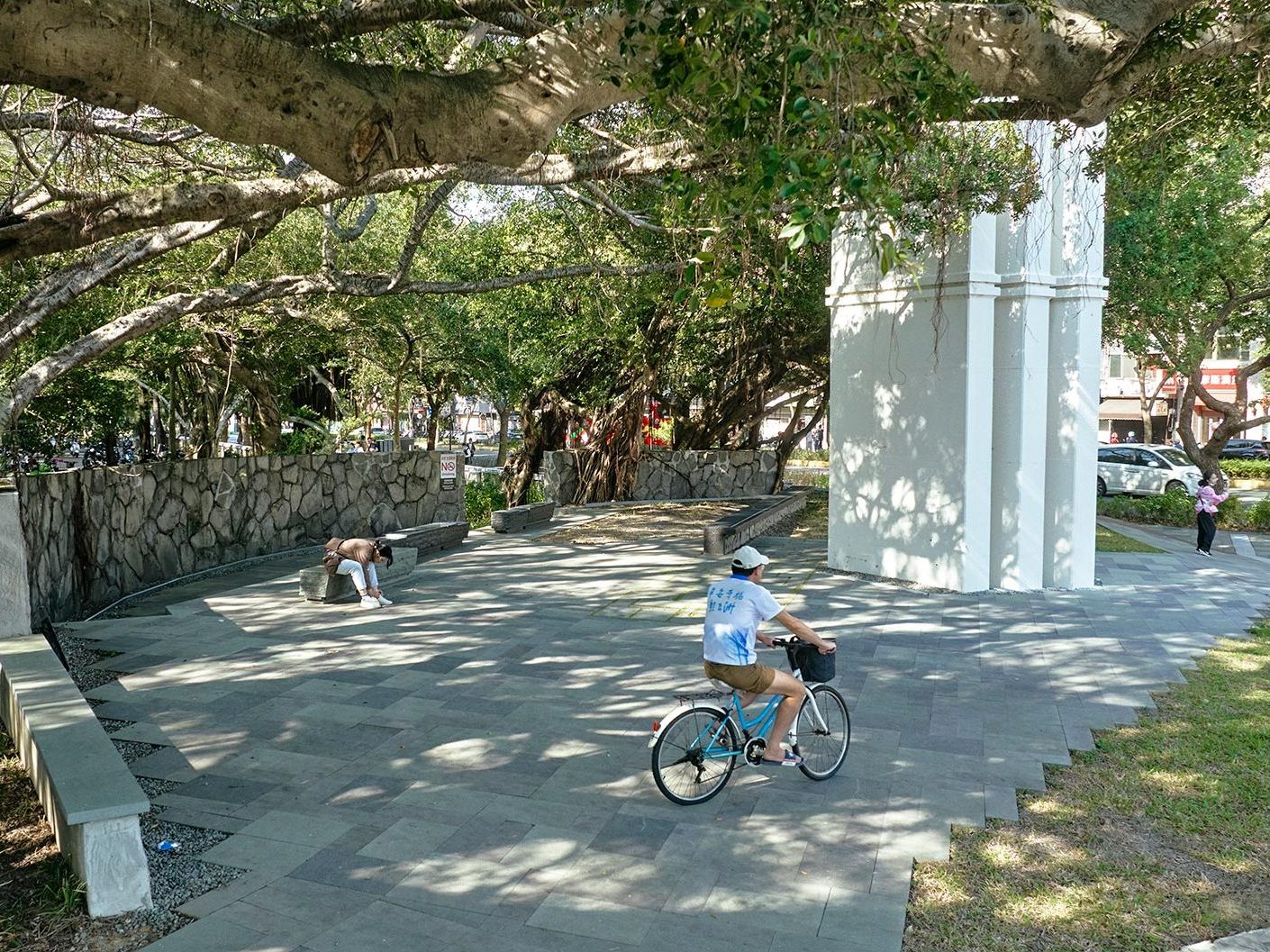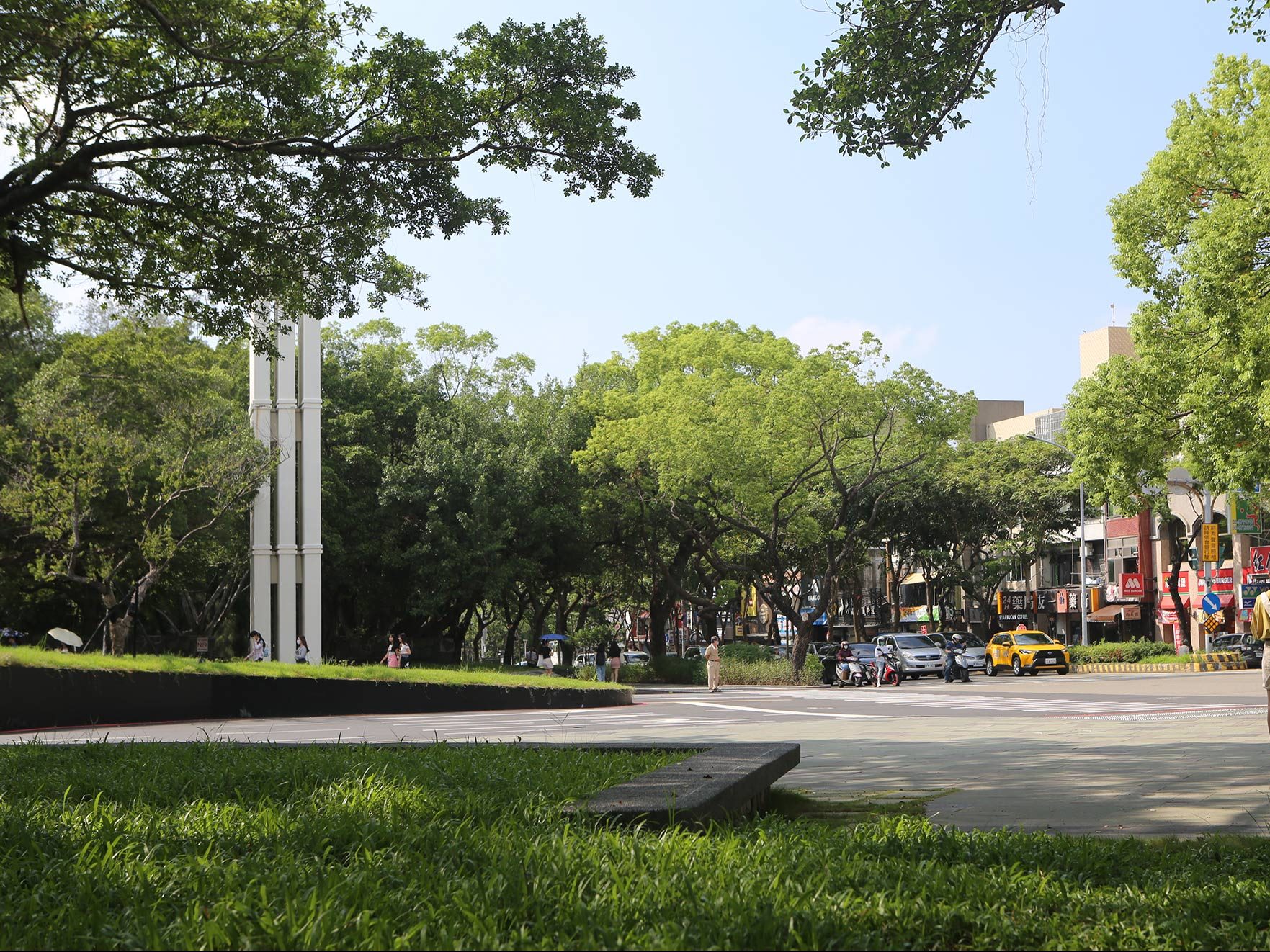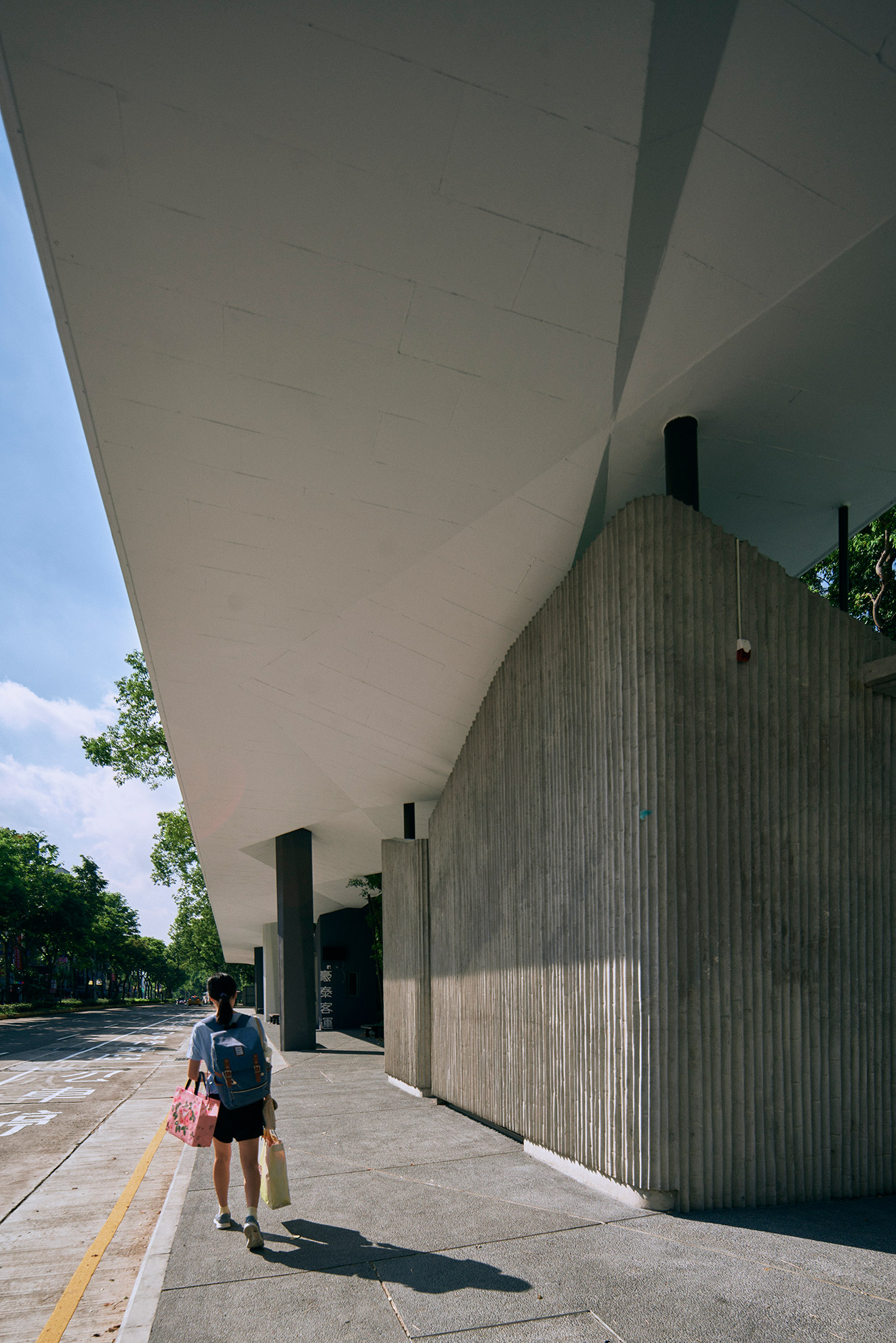1970年代臺灣開始有高速公路,清大校園是下新竹交流道左手邊展開來超過一公里令人羨慕的美麗風景。門面雖然免不了當時環顧四周的軍事影響,一代宗師楊英風仍在中段打開了優雅的幾何性校門,加上看進去林間小巧錯落的白色「現代」建築,還有張昌華先生清爽「形抗」的結構表現,都提升了當時臺灣風景的共同想像。
向西向老城緩坡滑行,四十年後,左邊我們引用「兩片白色輕盈的結構折板」、以及「貼近斜坡地表,上下不超過九十公分」這「扁扁但是關鍵的地表區間」進行秩序重整。
找回以大學城做為城市門戶的喜悅,以及青春浪漫、獨特、健康的知性樸素。
校園對街多年來發展成一大片、包含夜市熱鬧的住商混合區,始終壅塞著通勤車潮。三個進出校園和夜市的街口,成為我們製造捷徑,發揮交通專業整理的重點。
學校側雖有人行道、有1.1公里長的美麗大樟樹,但校內清秀的「水清木華」長年被神秘如軍方的圍牆與汽機車停放遮擋在後,後續擁擠的多加設施,再加上可能是為了掩蓋這些設施的裝飾,缺少整合,讓這裡不再恢宏。
前幾年聽到,一位多次幫助田中央朋友的心願:「找機會救救清大母校的北校門。」
放在心上沒忘,不只是不捨清華的社會形象,為未來非常可能會「在求學城市留下來」的年輕學子和新竹大地之間,製造「在日常生活中曾互相關心」的好經驗,也許是空間專長可以貢獻的事⋯⋯
忙著在抽象世界裡穿梭的清華師生,總是從夜市提著外食,跨過雖有樹林、但平均四十公尺寬的帶狀失落空間,視而不見的機車自行車停車區,趕著回到實驗室。如果可以像倫敦海德公園那種氣氛,有舒適、對角線切穿的捷徑;有社團活動、有邀請坐下的戶外桌椅,讓青年和長者停下腳步、在戶外交會真實世界的片刻該有多好。
In the 1970s, Taiwan began developing its freeway system. The National Tsing Hua University (NTHU) campus has always been a beautiful sight on the west of Highway No.1 while the campus was surrounded by military establishments at the time, the legendary architect Ying-Feng Yang still designed an elegant geometric gate. Along with the delicate and staggered white “modern” buildings nestled in the woods, and Mr. Chang-Hua Zhang’s refreshing structural expression of “form resistance”, these elements shaped a collective imagination of Taiwan’s landscape in the 70’s.
Now, forty years later, as we gently slide west toward the old town, we have subtly used two pieces of white, lightweight structural folding panels to reorganize the crucial section close to the sloping ground, with a height difference of no more than 90 centimeters.
We are dedicated to reviving the joyous expression of NTHU as the gateway to the city, celebrating its unique, romantic, and healthy purity.
Over the years, the area across from the campus has developed into a mixed-use residential and commercial neighborhood, including a bustling night market, which has consistently been congested with traffic. The three access points connecting the campus and the night market became key points where we create shortcuts and clear the traffic.
Although camphor trees line the 1.1-kilometer-long sidewalk of the campus, the lush nature of the campus has been obscured by walls reminding of its military past and ad hoc parking sheds. Additional badly planned facilities and signage help create a sense of chaos, diminishing the grandeur of the space.
A few years ago, a friend who had repeatedly supported our office, Fieldoffice Architects, asked us to save the north gate of NTHU if there’s a chance.
I’ve always kept this request in my heart, not only out of concern for NTHU’s social image but also because I strongly feel the importance of creating a good experience for future students who may stay in Hsinchu to engage with this city. This is perhaps something Fieldoffice Architects can achieve through our expertise in spatial design.
Faculty and students of NTHU, immersed in their abstract world, often carry takeouts from the night market. They cross a 40-meter-wide strip of space with overlooked parking areas as they hurry back to their labs. The space while tree-lined is desolated. Imagine if this space could invoke London’s Hyde Park, with diagonal shortcuts, vibrant club activities, and inviting outdoor seating. It may encourage youths and elders to pause and connect with the real world for a moment.
(全文請見《實構築》季刊23期)


